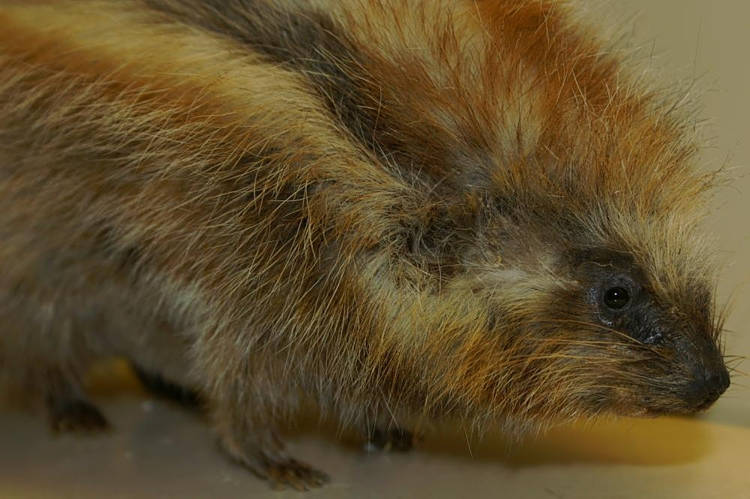The African crested rat, an elusive rodent that lives in forested areas of Eastern Africa, has a very strange yet intriguing defense mechanism against would-be predators – it licks deadly toxins onto its own fur.
People inhabiting the highland forests and woodlands of countries like Somalia, Sudan or Ethiopia have long known to stay clear of the large maned rat that makes its home in those areas. Known as Lophiomys imhausi to scientists, this long-haired rat is the world’s only poisonous rodent. But the most interesting thing about it is that it’s not born poisonous; it actually “borrows” the lethal toxin of a plant known as the “poison arrow tree”, which contains a poison strong enough to kill an elephant, when applied to an arrow head. The rat applies this toxin to specialized hairs on the sides of its body, turning itself into as lethal weapon against anyone foolish enough to attack it.

Photo: David J. Stang/Wikimedia Commons (CC BY-SA 4.0)
“If a dog tried to attack them, the dogs would get sick and die. So that information has been sort of circulating around for a very long time,” Sara Weinstein, a researcher with the Smithsonian Institution and the University of Utah, told NPR. But it wasn’t until 2011 that researchers witnessed the crested rat’s ritual of turning itself poisonous.
A team of researchers captured a crested rat and offered it a branch from the local Acokanthera schimperi tree, which they had heard locals say the rat chewed on. That local tale turned out to be true, as the rodent started chewing on the bark, mixing it with saliva and then applying the mixture onto specialized hairs on the sides of its body.
“Basically, it’s the only known mammal to date, at least that we know of, that co-opts toxins from a plant to make itself venomous,” Adam Ferguson, a mammal expert at the Field Museum in Chicago, said.
View this post on Instagram
In the last decade, scientists have been trying to find out if the behavior observed in that one rodent applied to the entire species, and whether the lethal toxin of the poison arrow tree really had no negative effect on them. A study on 25 trapped African crested rats showed that half of them chewed on the tree and applied the lethal mixture on their fur, and only once in a while.
What triggers this sort of behavior remains a secret, but scientists were able to conclude that out of the specimens that chewed on the poisonous plant, none showed any negative side-effects. Now, scientists are trying to sequence the entire genome of African crested rats to see how they are able to casually chew on a plant that can kill animals tens of times their size.
“If I was to go out there and start chewing on this tree, I would get incredibly sick and probably die,” Weinstein said, adding that during the study, the rats that gnawed on the plant remained perfectly active and healthy inside their enclosures.
Once a mythical creature that only appeared in local tales, the African crested rat remains a giants enigma, but the more scientists learn about it, the more fascinated they are. For example, what they believed was a solitary creature, turned out to have a very active and complex social life.
As far as natural defense mechanisms go, the African crested rat has one of the most effective we’ve ever featured, but this caterpillar that can scream without any lungs, or the this lizard that shoots blood out of its eyes are not too shabby either.












